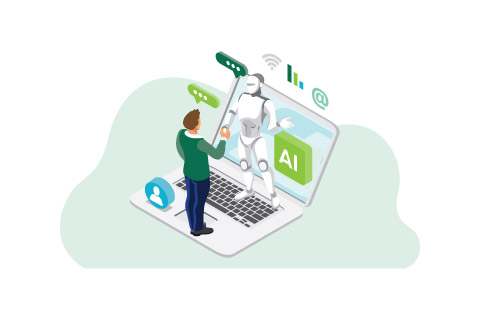Last weekend’s Financial Times Magazine was a fascinating conversation and deep dive into the state of customer service in the UK. In addition to the article, the comments from readers were equally revealing as they highlighted some pressing concerns: the role of technology, and artificial intelligence in particular, dominated the discussion.
The reality is that the adoption of technology is ubiquitous in almost all aspects of life. Customer service is no exception, and we’re now seeing some businesses suggest that AI can handle 700 times the customer service chats of a human.
That technology and AI will expand further into the service offering is to be welcomed if it ensures better knowledge and understanding of the customers’ needs and behaviours and enables those that serve to focus on what really matters, which is a heavy deployment of care and compassion. Nevertheless, it’s important to remember that it doesn’t implement itself – not yet anyway. In some cases where technology has served as the scapegoat for poor service, it’s poor deployment that is really to blame.
Companies are increasingly using AI in their customer service to improve automation – supporting self-service across a wider spectrum of needs to create a frictionless experience. (Which is of course becoming more challenging with the rise of fraudulent behaviour and the need to protect against this) If used well it can allow businesses to position customers into the correct channel and focus on personally serving those who require human assistance for their specific enquiry.
AI is often being used behind the scenes to prompt and support live agents, augmenting rather than replacing the important work they do. The ability to monitor sentiment, surface relevant data and provide prompts – all in real-time – offers a way to give a better experience for customer and service professional alike.
As consumers and businesses continue to negotiate the balance between ‘man and machine’, what is the algorithm for companies to get it right when it comes to integrating tech in their service offering?
Recognising the strengths of technology…
Some of the benefits of technology are already evident, and the Financial Times piece acknowledged how banking apps and online shopping have – for the most part – been transformative for the customer experience. The performance of some online retailers and digital banks in our latest UK Customer Satisfaction Index backs this up.
Moreover, in a time when many businesses no longer have the same level of personal relationship with their customers, technology has the potential to address this by providing a data-driven understanding of their needs and interests – that is, as long as businesses are correctly interpreting and applying the data they collect.
While acknowledging its limitations
While there are numerous advantages, technology does have its limitations. For more complex tasks, areas that require genuine empathy, or a level of emotional connection, the human wins hands down!
Speaking with Fortnum & Mason recently, I was reflecting on how they use actors to recreate customer service situations to understand how service professionals might be more proactive and cognisant in their ability to anticipate, not just respond – emphasising that a human touch remains more effective in adapting to the unpredictable nature of human beings.
One piece in a much bigger puzzle
Technologies like AI should be deployed thoughtfully – where they are best suited, using the right data to drive them, supported by trained professionals, and with the customer experience front of mind.
From everything I see and hear, I believe the future of customer service needs a strong focus on empathy and for organisations to draw on every kind of intelligence available to provide a strong customer experience – both digital and human.
By adopting this approach, businesses will step closer to being able to cater to the needs of all customers, in every situation. It is these organisations that offer their customers choices when it comes to service that are most likely to have continued success.



